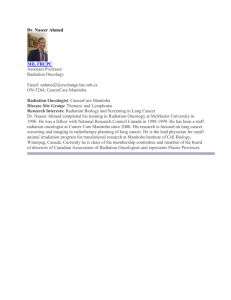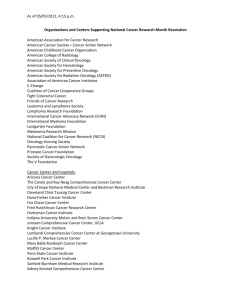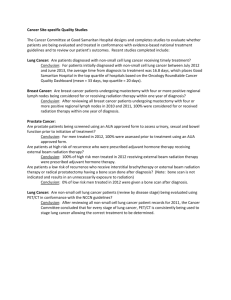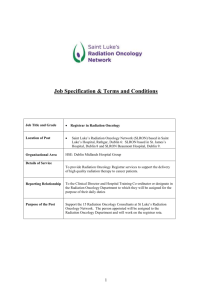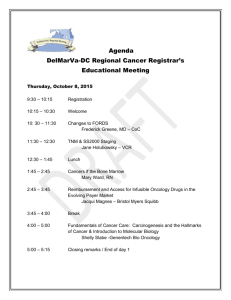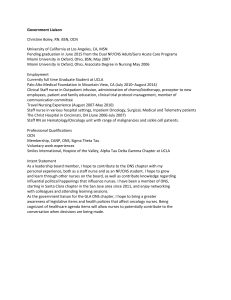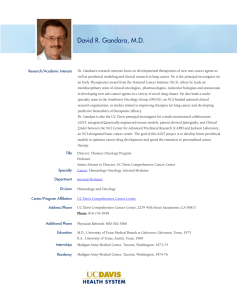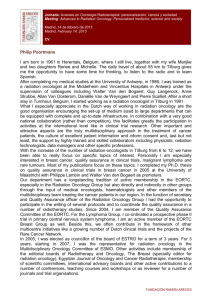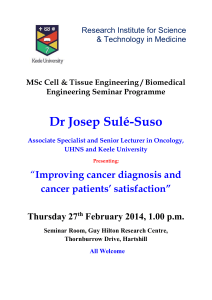Case Study Investigation for Wiki page
advertisement
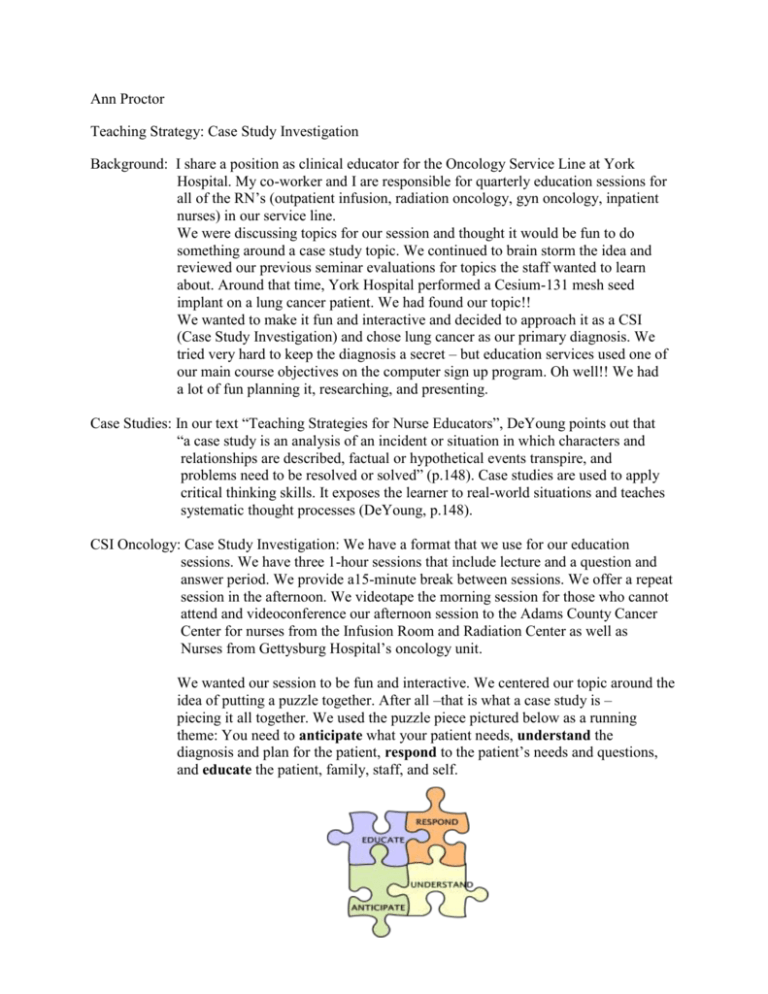
Ann Proctor Teaching Strategy: Case Study Investigation Background: I share a position as clinical educator for the Oncology Service Line at York Hospital. My co-worker and I are responsible for quarterly education sessions for all of the RN’s (outpatient infusion, radiation oncology, gyn oncology, inpatient nurses) in our service line. We were discussing topics for our session and thought it would be fun to do something around a case study topic. We continued to brain storm the idea and reviewed our previous seminar evaluations for topics the staff wanted to learn about. Around that time, York Hospital performed a Cesium-131 mesh seed implant on a lung cancer patient. We had found our topic!! We wanted to make it fun and interactive and decided to approach it as a CSI (Case Study Investigation) and chose lung cancer as our primary diagnosis. We tried very hard to keep the diagnosis a secret – but education services used one of our main course objectives on the computer sign up program. Oh well!! We had a lot of fun planning it, researching, and presenting. Case Studies: In our text “Teaching Strategies for Nurse Educators”, DeYoung points out that “a case study is an analysis of an incident or situation in which characters and relationships are described, factual or hypothetical events transpire, and problems need to be resolved or solved” (p.148). Case studies are used to apply critical thinking skills. It exposes the learner to real-world situations and teaches systematic thought processes (DeYoung, p.148). CSI Oncology: Case Study Investigation: We have a format that we use for our education sessions. We have three 1-hour sessions that include lecture and a question and answer period. We provide a15-minute break between sessions. We offer a repeat session in the afternoon. We videotape the morning session for those who cannot attend and videoconference our afternoon session to the Adams County Cancer Center for nurses from the Infusion Room and Radiation Center as well as Nurses from Gettysburg Hospital’s oncology unit. We wanted our session to be fun and interactive. We centered our topic around the idea of putting a puzzle together. After all –that is what a case study is – piecing it all together. We used the puzzle piece pictured below as a running theme: You need to anticipate what your patient needs, understand the diagnosis and plan for the patient, respond to the patient’s needs and questions, and educate the patient, family, staff, and self. We had fun dressing up as Sherlock Holmes (I am the one on the left). The first hour Linda presented the case study on our patient with lung cancer who had radiation seed implants in her thoracic area. She presented it through power point, but wove in information about small-cell vs. non-small cell lung cancer, diagnosis, staging, and treatment options for lung cancer. She used actual x-ray, CT, and PET scan images to help in the case study presentation. Linda used questions throughout her presentation to engage the audience. We wanted to engage both the visual and auditory learners!! One of our radiation oncologists presented for the next hour. It can be risky using a physician to discuss a nursing topic!! But he did an excellent overview of the history of radiation therapy techniques and also spoke on what we may see in the future. He talked about our case study patient since he was the radiation oncologist involved in the decision to treat her with the mesh implants. I presented the third hour. My focus was “Nursing Care of the Lung Cancer Patient”. Below is the slide showing my topics. This section was more interactive – we had people come forward to demonstrate how to set up a chest tube, and use the Pleur-x catheters. I presented 2 oncology emergencies – superior vena cava syndrome and spinal cord compression. Putting the Puzzle Together • VATS • Chest Tubes • Nursing Care of the Brachytherapy Patient • Pleur-x Catheters • Oncology Emergencies and Lung Cancer RESPOND EDUCATE UNDERSTAND ANTICIPATE Evaluation: Overall, it was a success. We had very positive comments from the nurses. The program appealed to people with different learning styles. We kept a running theme that tied the pieces together. Case studies are a great learning tool – even for the most experienced nurses!! The best part- I had enjoyed putting it together, I learned a great deal from my research, and I had fun presenting it!
